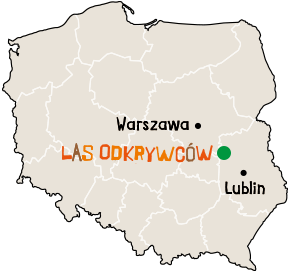Caution! Attack of the woodworm!
Have you ever wondered how trees communicate? Simple—through their roots. Under the forest floor you can also find creatures that play a key role in helping roots communicate—mushrooms. Why are they called creatures? Well, because to this day we are not sure if they are plants or animals.
Now pay attention! When a tree wants to relay an important message to another tree, it sends a certain substance through its roots—sugar. The tips of roots are wrapped in delicate, cotton-like fibers thanks to which mushrooms are able to receive and further pass on messages from the trees. Mushroom fibers, also known as mycelium, spread under the soil, sometimes several hundred meters wide, connecting trees with each other and facilitating message exchanges that can help them prepare for events like… Woodworm attacks!
However, nothing is free, even in nature. Just as we must pay for the Internet, trees must pay for this underground communication network. As previously mentioned, the currency of the forest is… sugar, it is needed for life and is in fact loved by the whole forest and its inhabitants. While trees can easily produce sugar for themselves, mushrooms can only dream about doing so. Therefore, mushrooms require up to 35% of the sugar that is produced by trees in exchange for their underground communication network. Rather than be left in the dark with no information, trees agree to pay whatever price is asked of them.
Forest fun fact
A teaspoon can hold over a kilometer of thin white fibers of mycelium that connect all trees underground. Mushrooms need sugar to feed themselves, but they also need it to produce fruit. What you pick and fill your baskets with in autumn is nothing more than transformed sugar that was produced by trees. Sweet, right?

